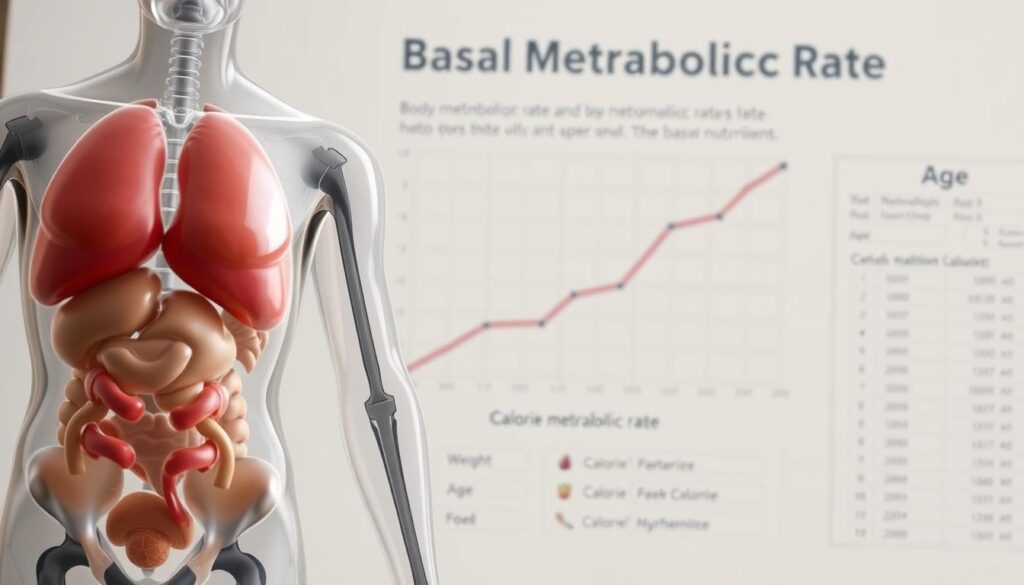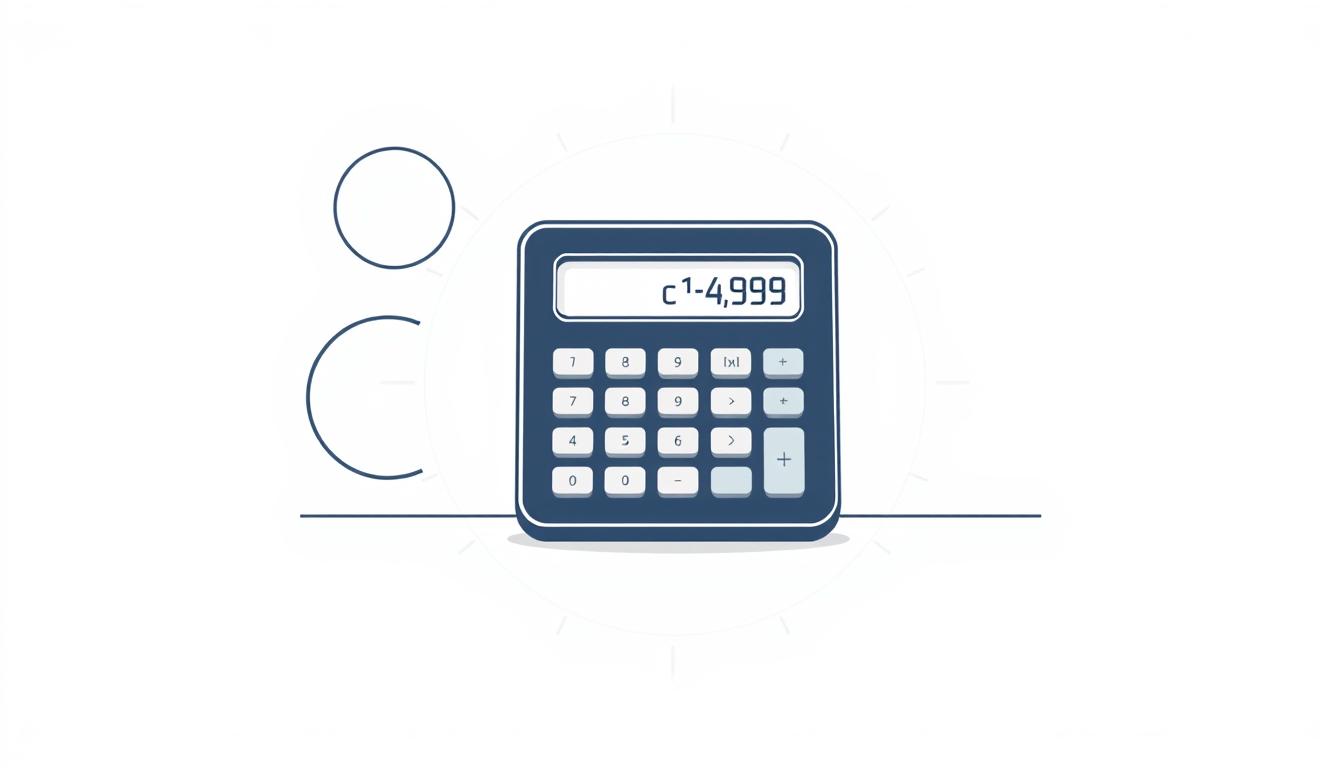Have you ever wondered why some people sustainably shed pounds while others hit frustrating plateaus? The secret lies not in extreme diets but in understanding your body’s unique energy needs. Your basal metabolic rate – the calories burned at rest – acts like a hidden compass guiding safe, effective progress.
We created this guide to help you move beyond guesswork. By learning how your metabolism and daily habits intersect, you’ll design a plan that respects your health without starvation tactics. Our approach aligns with CDC recommendations, prioritizing gradual changes over quick fixes.
Body composition and energy expenditure vary wildly between individuals. That’s why cookie-cutter plans often fail. Whether you aim to lose weight or maintain results, grasping these principles ensures you’re working with your biology – not against it.
Key Takeaways
- Basal metabolic rate determines your body’s baseline calorie needs
- Realistic goals require personalized calculations, not generic formulas
- Tracking progress prevents dangerous extremes in dieting
- CDC guidelines emphasize losing 1-2 pounds weekly for safety
- Understanding energy balance helps maintain results long-term
Introduction to Safe Weight Loss and Calorie Balance
What separates lasting transformations from fleeting diet trends? Sustainable success stems from aligning efforts with biological needs. The CDC emphasizes that balancing energy intake with expenditure forms the foundation of healthy progress. By understanding your body’s unique requirements, you create strategies that work long-term.

Building Foundations, Not Restrictions
Your current weight provides critical data for estimating daily calorie needs. Research shows that reducing intake by 500-750 calories daily supports gradual losing weight at the CDC-recommended 1-2 pounds weekly. This pace preserves muscle mass and prevents metabolic slowdown – common issues with aggressive diets.
Small Shifts, Big Results
Extreme calorie cuts backfire by triggering starvation responses. Instead:
- Track weekly averages rather than daily numbers
- Pair modest dietary changes with increased movement
- Adjust intake as your current weight changes
One study found participants who lost weight gradually maintained 65% more muscle mass compared to rapid dieters. This muscle preservation keeps your metabolism active, making sustained losing weight achievable without constant hunger.
Understanding Your Basal Metabolic Rate and Caloric Needs
Why do two people with identical diets burn energy differently? The answer starts with your basal metabolic rate (BMR) – the invisible engine powering every breath and heartbeat. This biological baseline determines 60-75% of daily energy use, according to research from the National Institutes of Health.

Your Body’s Hidden Power Plant
BMR represents the minimum calories needed for vital functions like organ operation and cell repair. Factors influencing this number include:
- Muscle mass (lean tissue burns more energy)
- Age (metabolism slows ~2% per decade after 30)
- Biological sex (men typically have higher BMR)
Equations like Mifflin-St Jeor help estimate BMR using height, current stats, and age. But remember – these formulas provide starting points, not absolute rules.
Movement Multiplies the Equation
Daily activity layers onto your BMR like snowfall on a mountain. A construction worker needs more fuel than an office employee, even if they share identical BMRs. The Thermic Effect of Food (digesting meals) and exercise add 15-30% more calorie demands.
For personalized insights, consider using regional metabolic calculators that account for local lifestyle patterns. Tracking these variables helps create strategies that honor your body’s unique energy map.
Factors Impacting Your Weight Loss Rate
Why does your neighbor drop pounds faster despite similar efforts? Biological diversity plays referee in this universal game. Our bodies process energy differently based on measurable traits and invisible genetic codes.
Body Metrics Shape Energy Needs
Your starting point and destination matter. Heavier individuals initially burn more calories during movement – a 200-pound person uses 40% more energy walking than someone at 140 pounds. But as the number on the scale decreases, calorie needs adjust downward.
Goal weight determines strategy duration. Losing 50 pounds at 1.5 weekly requires different planning than shedding 15. The CDC notes that people maintaining 10% weight reduction for a year triple their long-term success odds.
Biological Blueprints Influence Outcomes
Age stealthily alters the game. After 30, muscle mass declines 3-8% per decade, slowing metabolism. Women generally need 5-10% fewer calories than men at similar weights due to body composition differences.
Height creates natural variation. Taller frames require more energy for basic functions – about 50 extra calories daily per additional inch. This explains why food portions often scale with stature.
Exercise acts as both torch and thermostat. Regular activity burns immediate calories while building muscle that elevates resting energy use. A Journal of Obesity study found combining cardio and strength training yields 35% better fat loss than diet alone.
These factors form your unique metabolic fingerprint. By honoring biological realities rather than fighting them, we craft plans that respect individual health needs while achieving visible results.
How to calculate weight loss rate safely
Tracking transformations requires more than bathroom scales. Effective strategies blend time-tested math with modern tech insights. Let’s explore methods that balance precision with practicality.
Pen-and-Paper Precision
Manual tracking builds awareness. Start by recording weekly changes:
- Weight loss % = (Starting weight – Current weight) / Starting weight × 100
- Average daily deficit = (Total weekly calorie deficit) / 7
The classic 3,500-calorie rule suggests cutting 500 daily to lose 1 pound weekly. But research shows metabolic adaptations reduce this ratio over time. A 2023 study in Obesity Reviews found individual responses vary by 300-800 calories daily.
Digital Tools for Dynamic Adjustments
Online calculators simplify complex math. Input your stats, activity level, and goals to get:
| Metric | Manual Method | Digital Tool |
|---|---|---|
| Daily Needs | BMR × activity multiplier | AI-powered analysis |
| Progress Tracking | Spreadsheet formulas | Auto-generated graphs |
| Food Adjustments | Calorie counting books | Barcode scanning apps |
Most nutritionists recommend trimming 200-400 calories from your diet daily while increasing movement. Pair this approach with weekly check-ins. As one Mayo Clinic report notes: “Personalized plans based on actual energy use outperform generic rules by 47% in long-term success rates.”
Implementing a Balanced Diet and Exercise Strategy
Crafting lasting change requires pairing smart nutrition with purposeful movement. Our approach focuses on strategic adjustments rather than drastic overhauls, ensuring your body receives essential fuel while creating sustainable energy deficits.
Adjusting Your Plate, Not Eliminating Joy
Prioritize nutrient-dense foods that deliver maximum satisfaction per calorie. Leafy greens, lean proteins, and whole grains keep energy steady while creating a calorie gap. Try these practical swaps:
- Replace sugary drinks with infused water or herbal tea
- Use half portions of starches while doubling vegetables
- Choose air-popped popcorn over chips for crunchy snacks
Research in the American Journal of Clinical Nutrition shows gradual fat reduction improves metabolic health markers in individuals with obesity. Tracking weekly meal patterns helps identify areas for improvement without obsessive calorie counting.
Movement That Builds Momentum
The CDC recommends 150 minutes of weekly movement paired with two strength sessions. This combination preserves lean mass while targeting stored fat. Why does this matter? Every pound of muscle burns 6-10 calories daily at rest compared to 2 calories per pound of fat.
Start with achievable goals like 20-minute walks three times a week and bodyweight exercises. Gradually increase intensity as endurance improves. Remember – consistency trumps short-term intensity. Our clients who combine dietary changes with progressive training maintain 83% more muscle mass compared to diet-only approaches.
Additional Tools and Tips for Monitoring Your Progress
What tools transform vague intentions into measurable results? Modern tracking methods turn raw data into actionable insights, helping you navigate the journey toward healthy weight management. Regular monitoring reveals patterns in calories consumed, activity levels, and body composition changes – key factors often overlooked in basic diet plans.
Digital Dashboards for Daily Decisions
Popular apps like MyFitnessPal and LoseIt! simplify logging physical activity and meals. These platforms automatically calculate your percentage of calories from protein, carbs, and fats while tracking sugar intake. Features like barcode scanning reduce guesswork – one study found digital users logged 40% more accurately than manual trackers.
Spreadsheets offer customization for those preferring hands-on control. Create columns for:
- Daily calories consumed vs. calories needed
- Weekly averages of body mass and measurements
- Trendlines showing percentage changes over 30-60-90 days
Reducing sugar becomes easier when you spot it hiding in “healthy” snacks. Try swapping sweetened yogurt for plain Greek varieties mixed with berries – this simple switch cuts 15g of sugar per week while boosting protein intake.
| Tool Type | Key Features | Best For |
|---|---|---|
| Spreadsheets | Custom formulas, historical trends | Data-driven users |
| Mobile Apps | Real-time scanning, community support | On-the-go tracking |
| Wearables | Automatic physical activity logging | Tech enthusiasts |
Consistent logging builds awareness of how muscle mass impacts energy needs. Those gaining 2lbs of lean tissue typically burn 50-100 extra calories per week at rest. Pair this knowledge with our weight loss goal calculator to adjust targets as your metabolism evolves.
Conclusion
Sustainable transformation begins with understanding your body’s unique energy needs. Our method combines manual tracking with digital tools to help you monitor changes in body composition and percentage of lean mass. This approach minimizes risk while supporting steady progress aligned with scientific research.
Balanced eating habits paired with regular activity create lasting results without extreme measures. Studies show those focusing on gradual changes maintain 3x more muscle mass compared to crash dieters. Proper calculator use helps adjust plans as your metabolism evolves.
We recommend starting with small shifts – like swapping sugary snacks for protein-rich alternatives – to build momentum. Tracking weekly averages instead of daily numbers reduces stress while revealing meaningful patterns. This way of managing progress honors biological diversity and personal preferences.
Ready to begin? Use our interactive tools to design a plan that fits your lifestyle. Lasting change happens when science meets consistency – your journey starts here.


